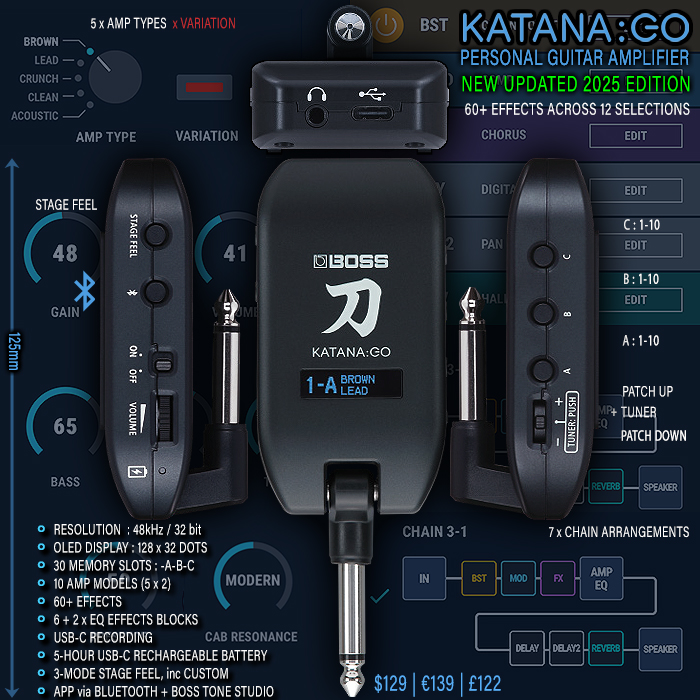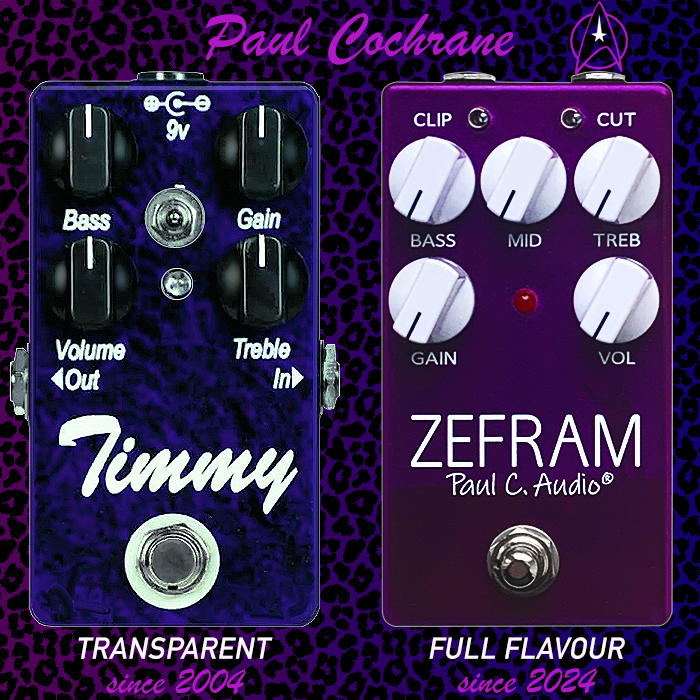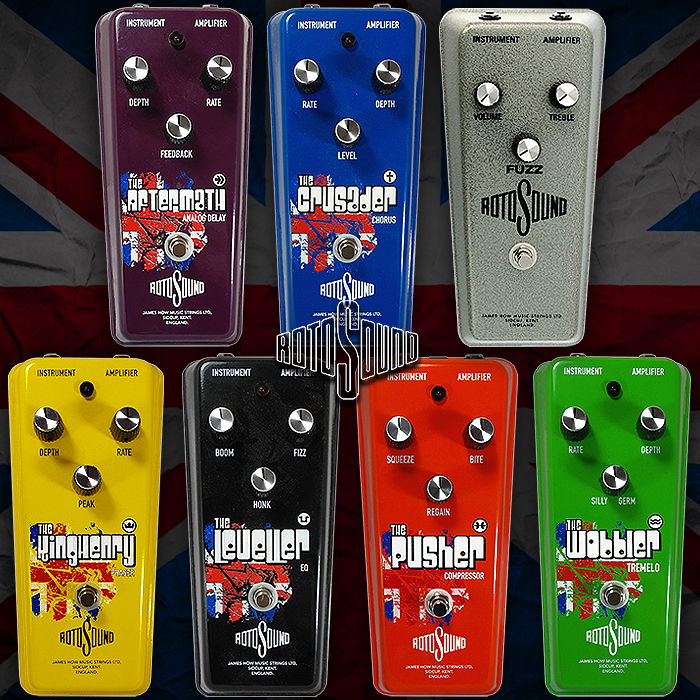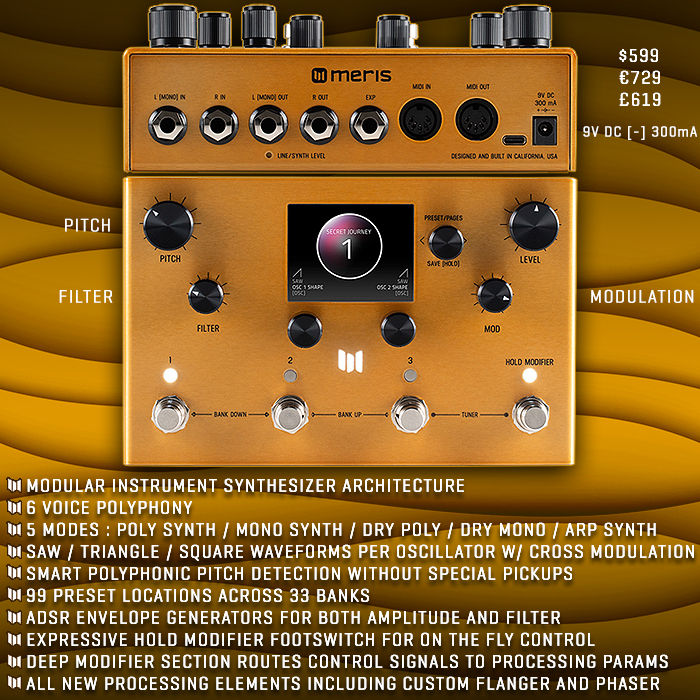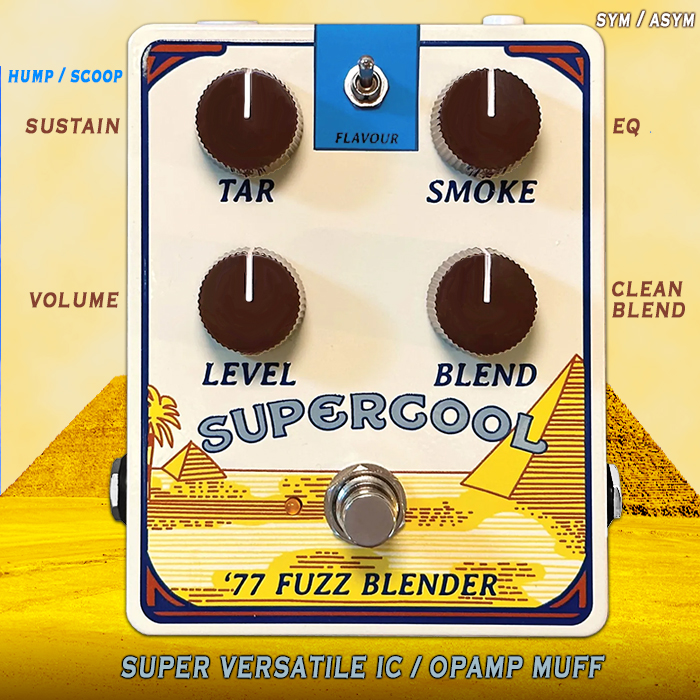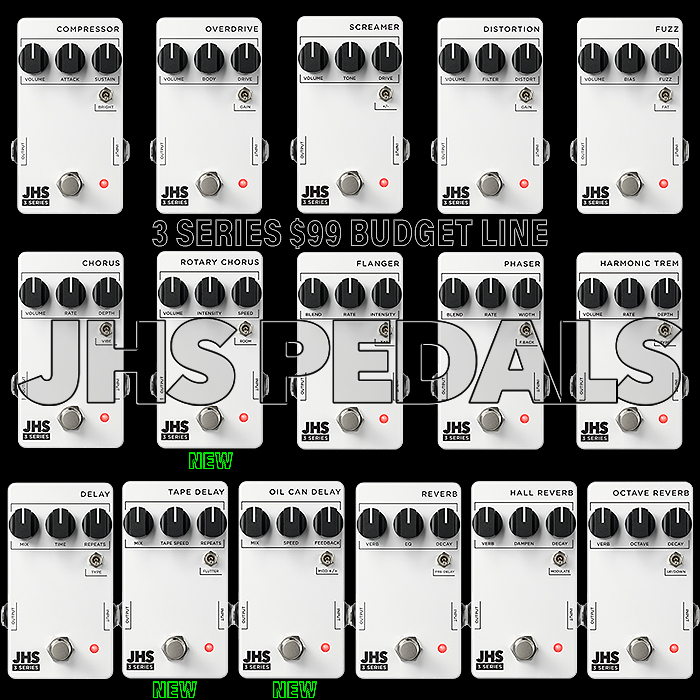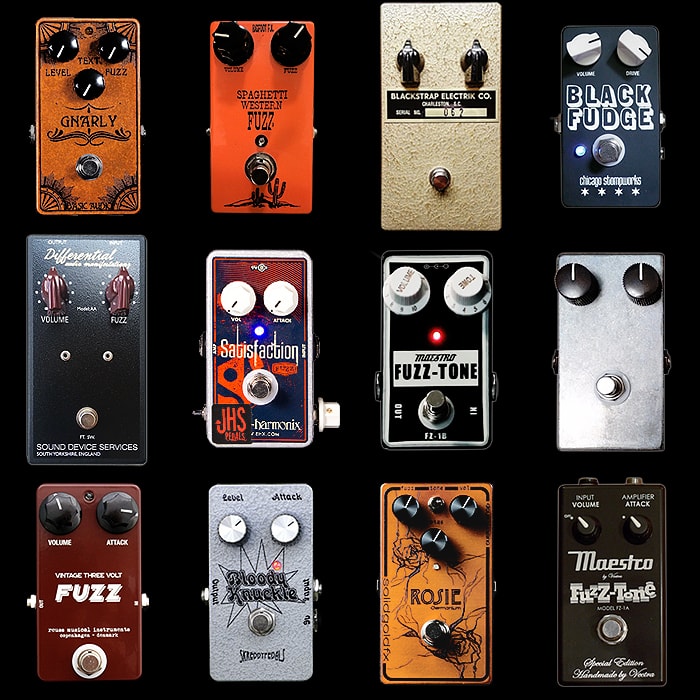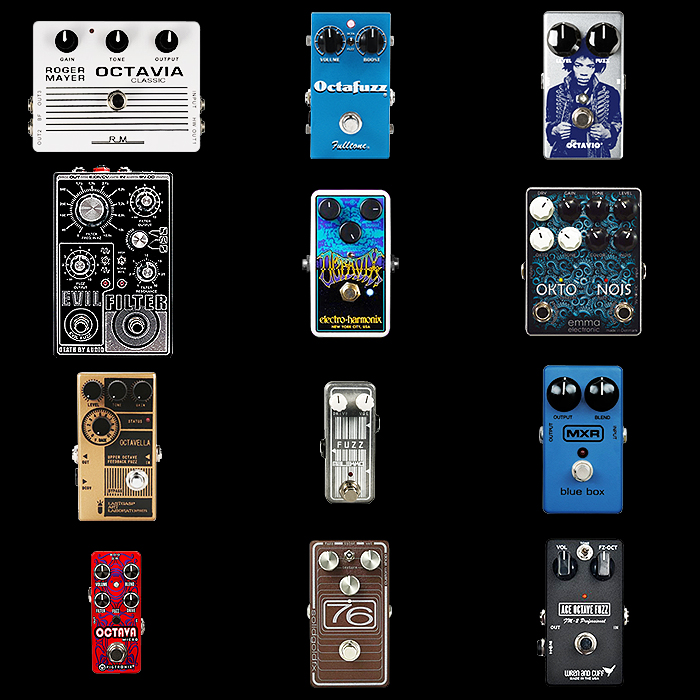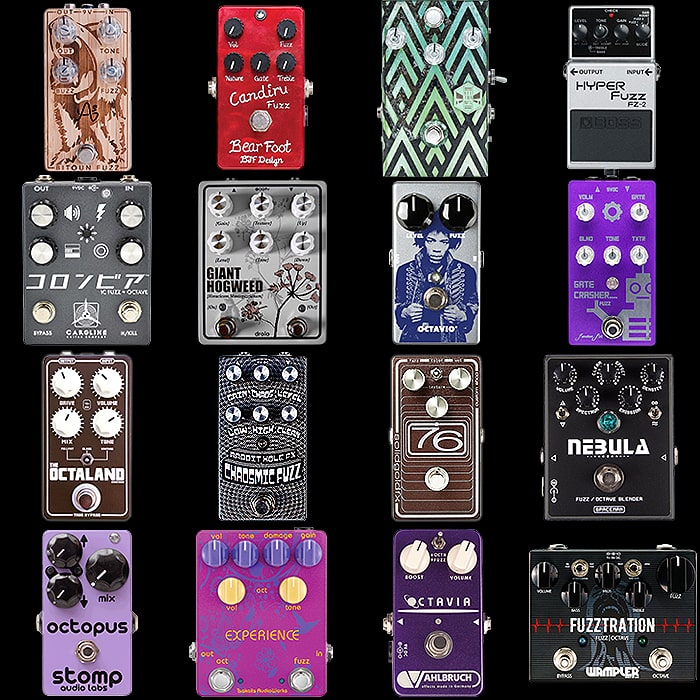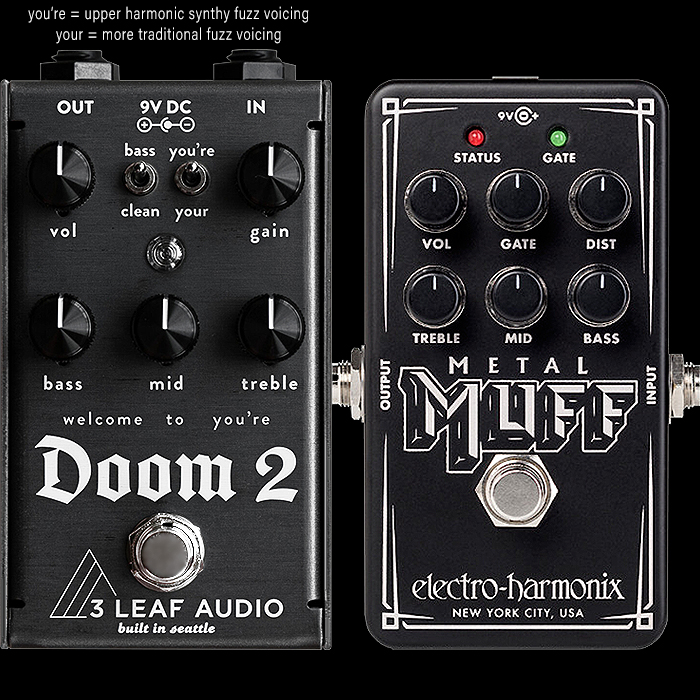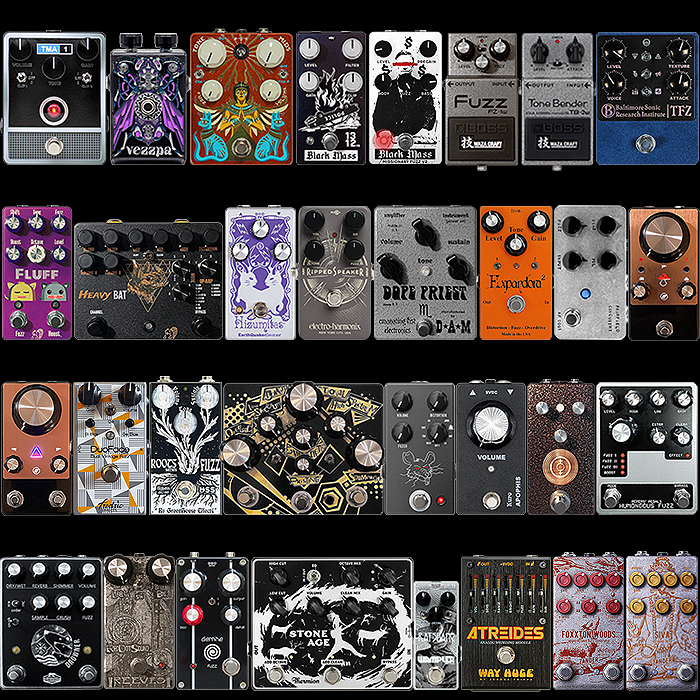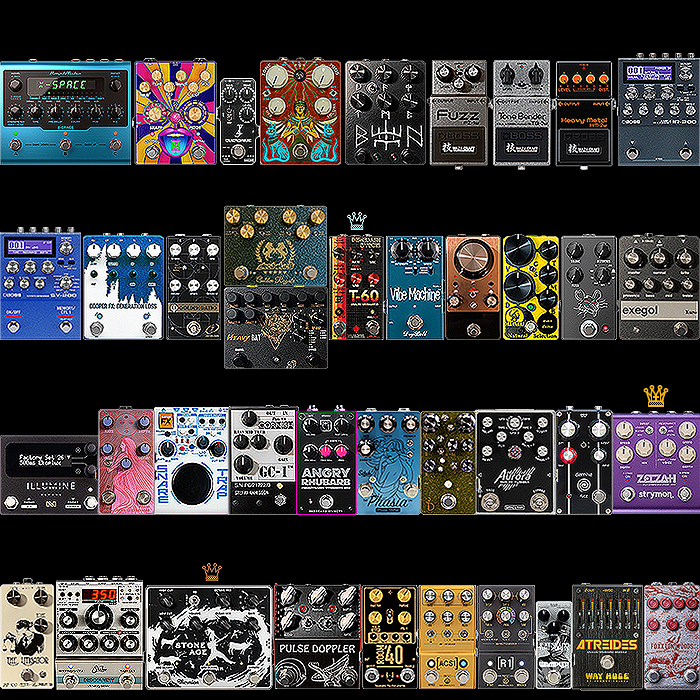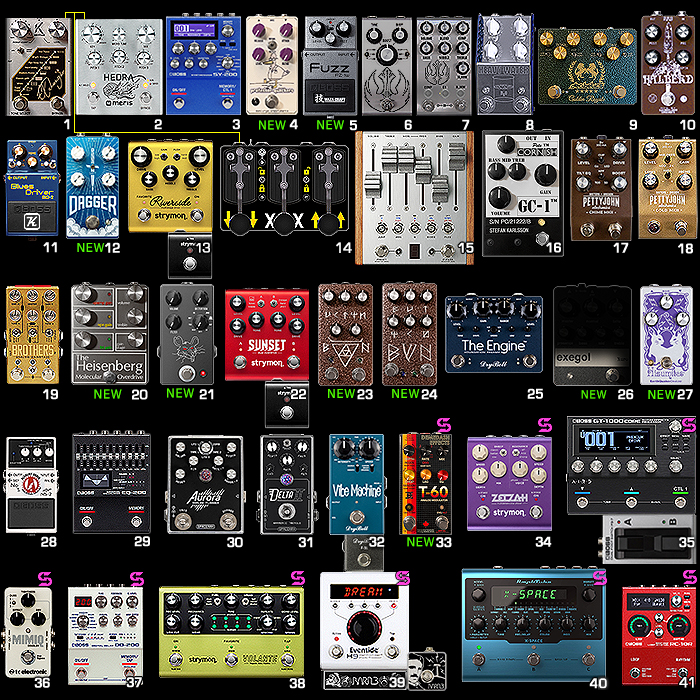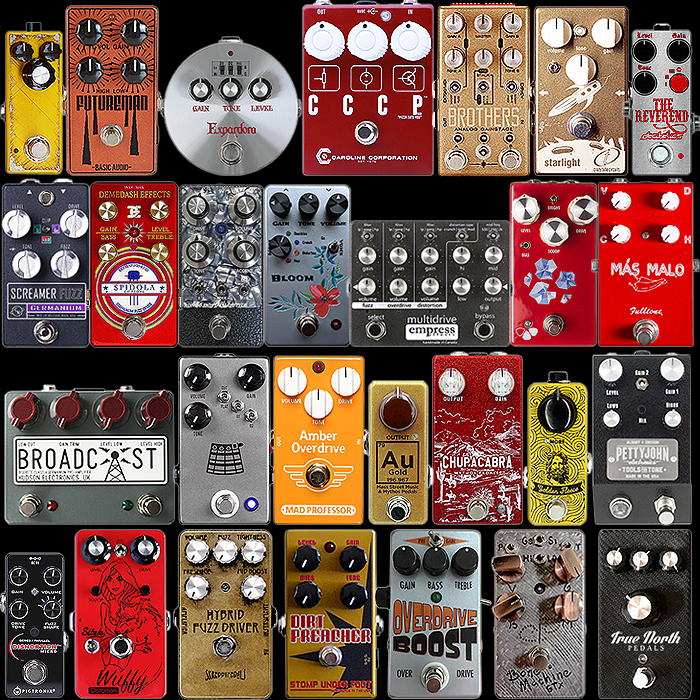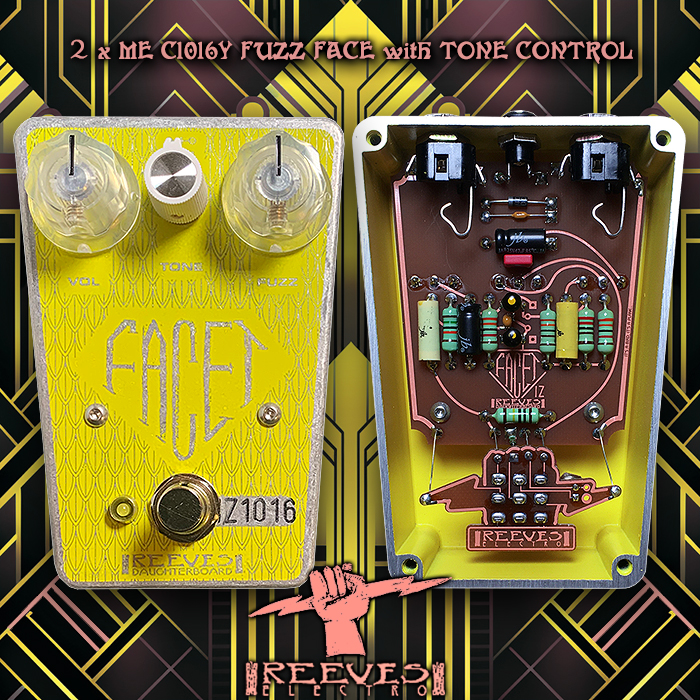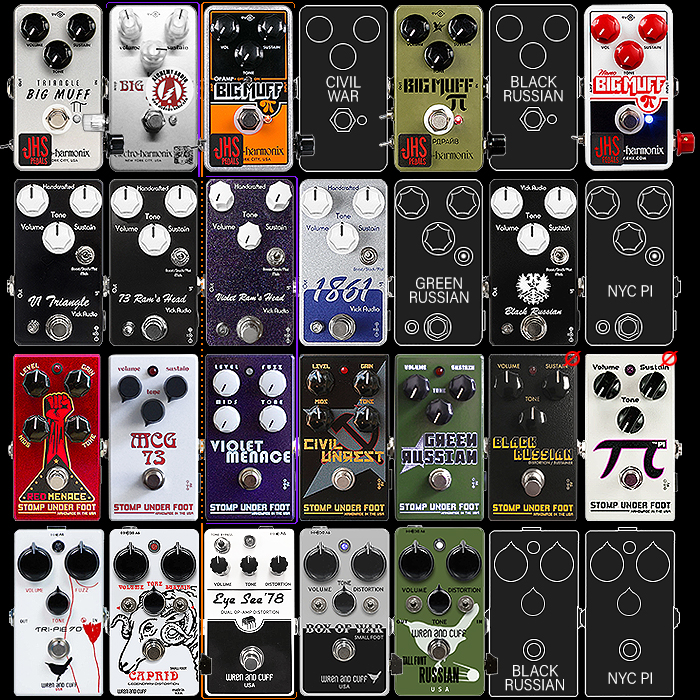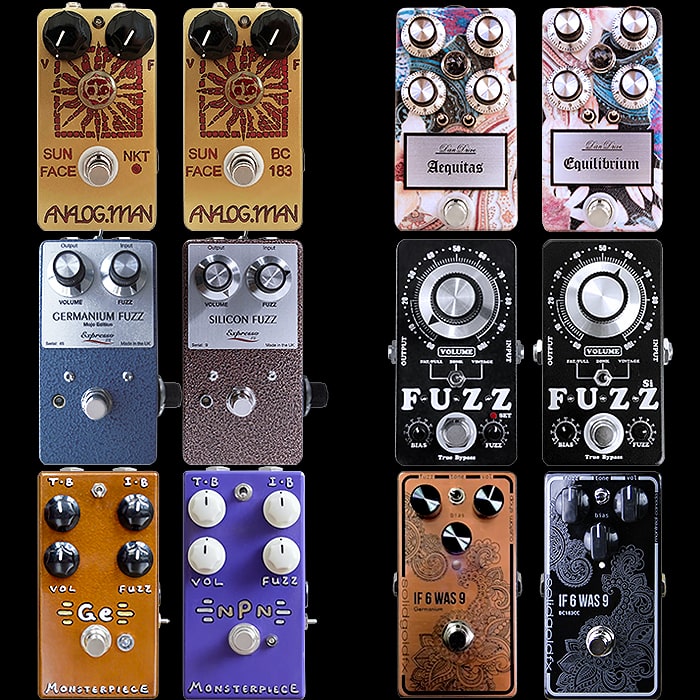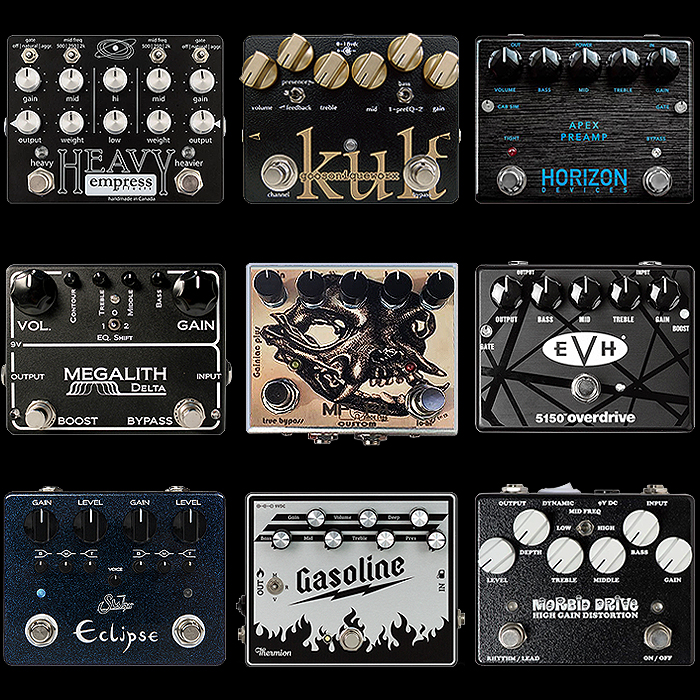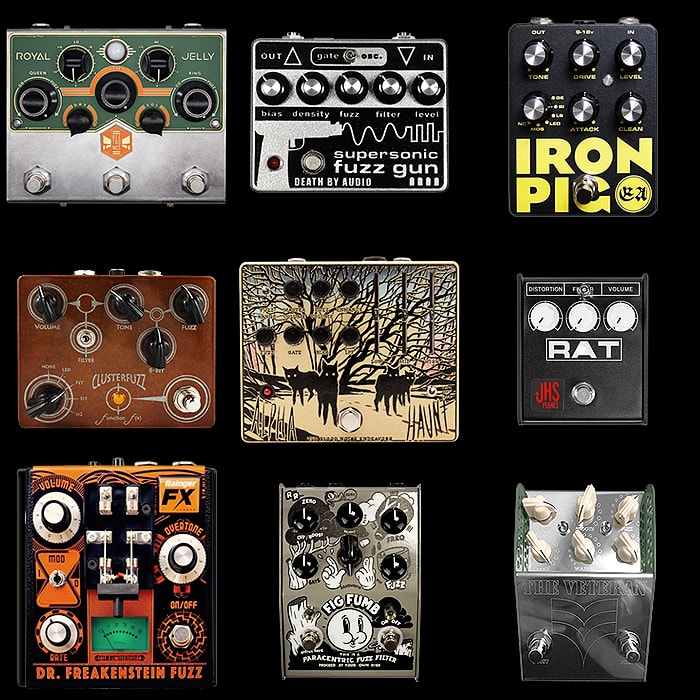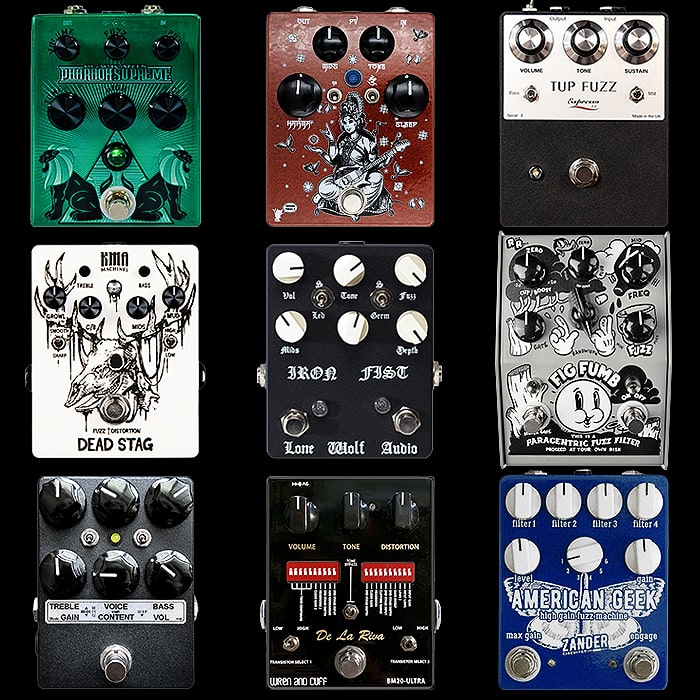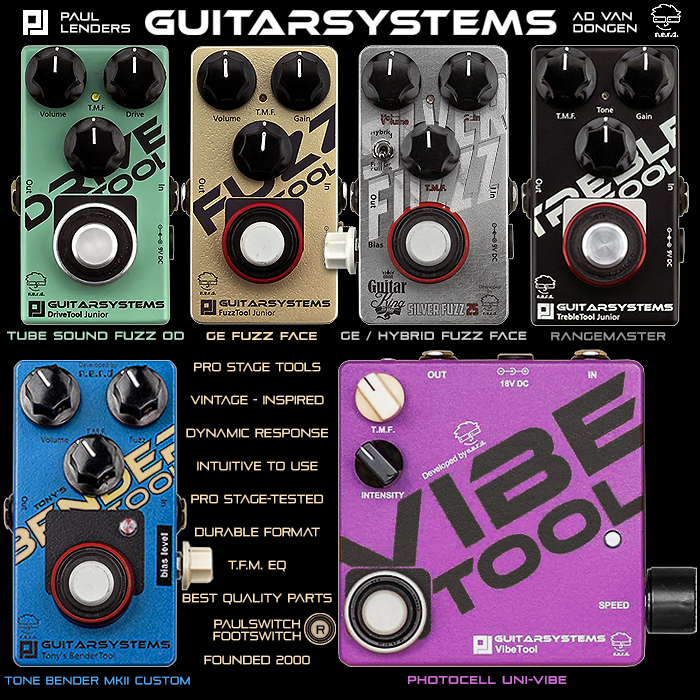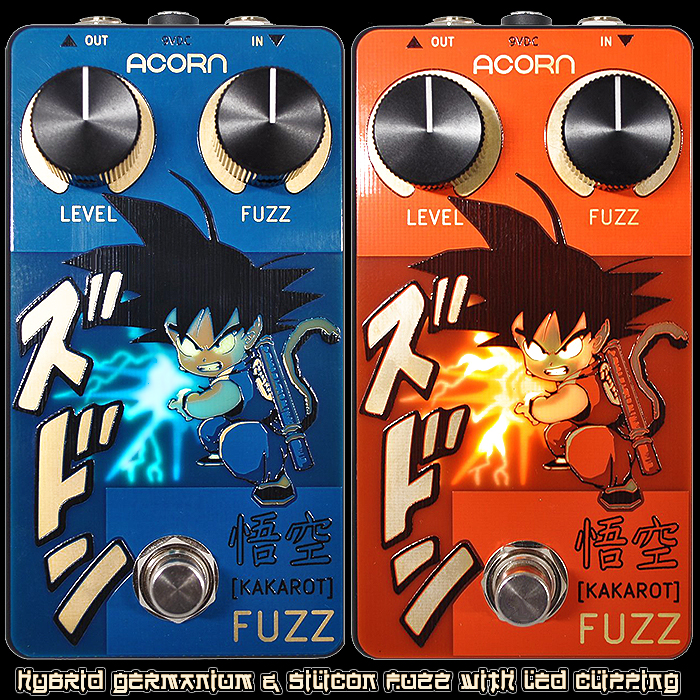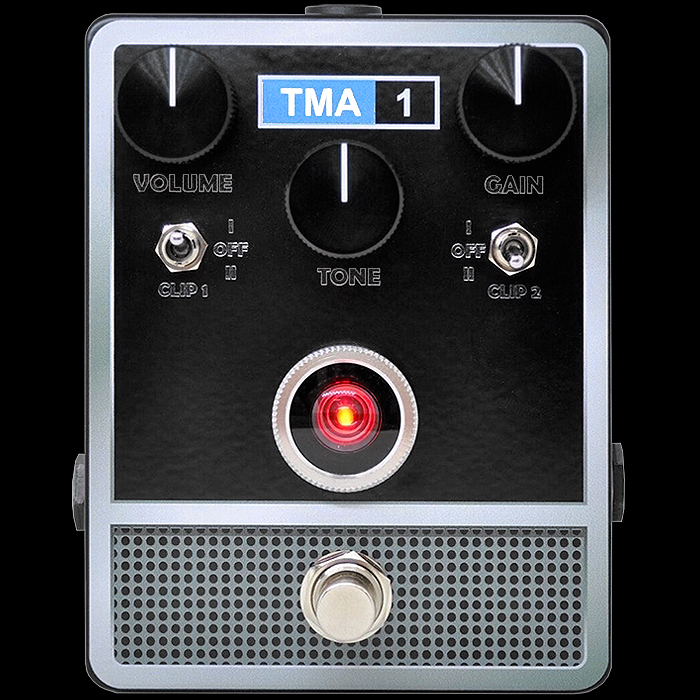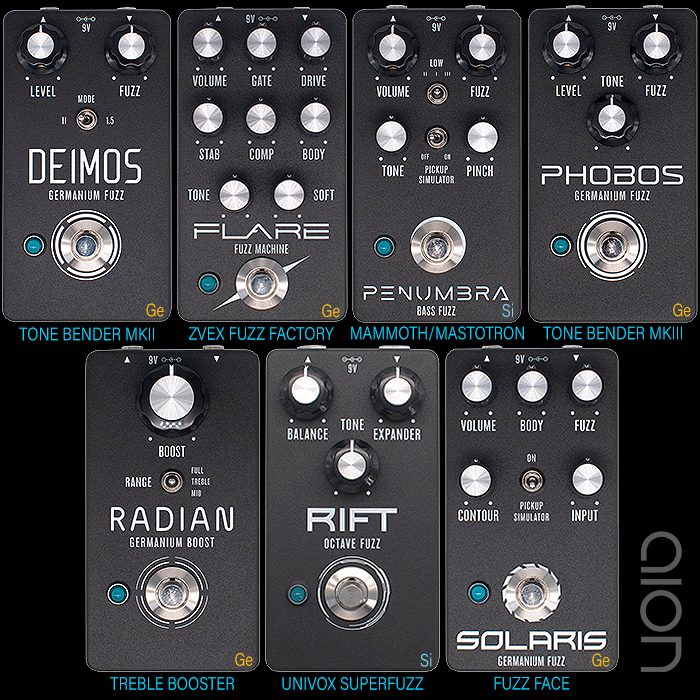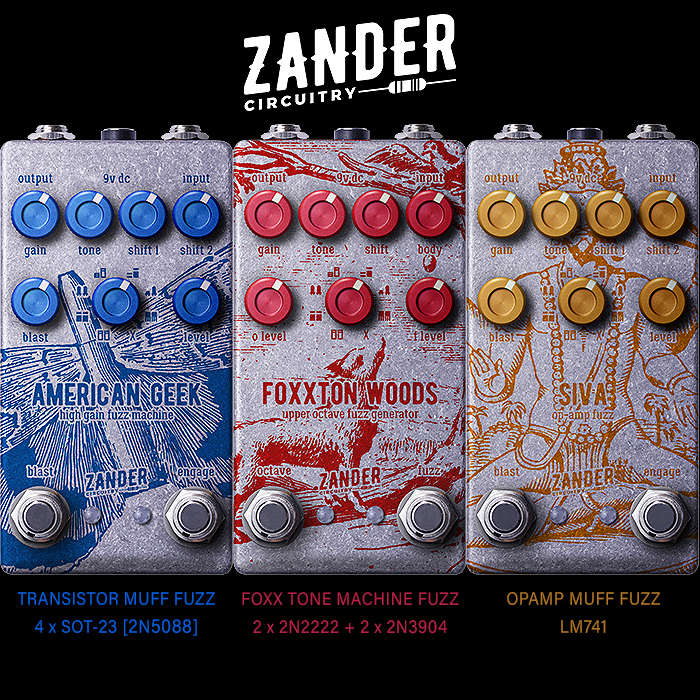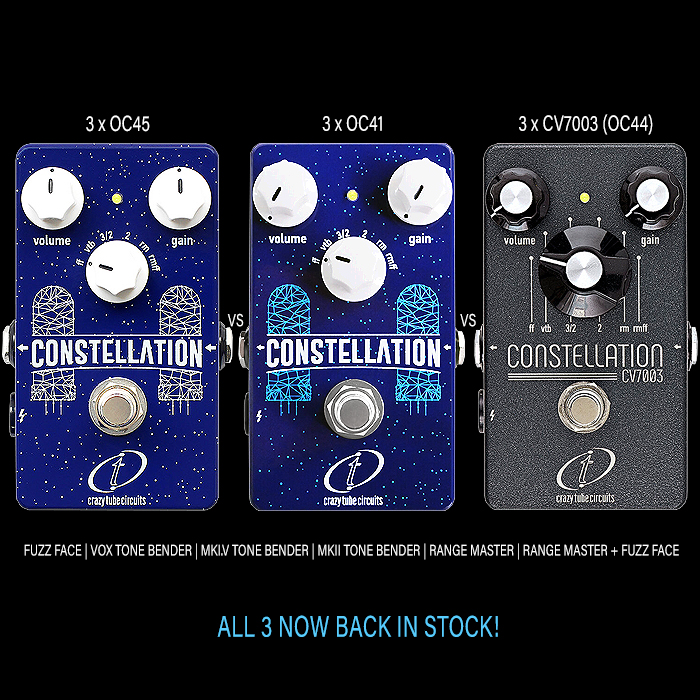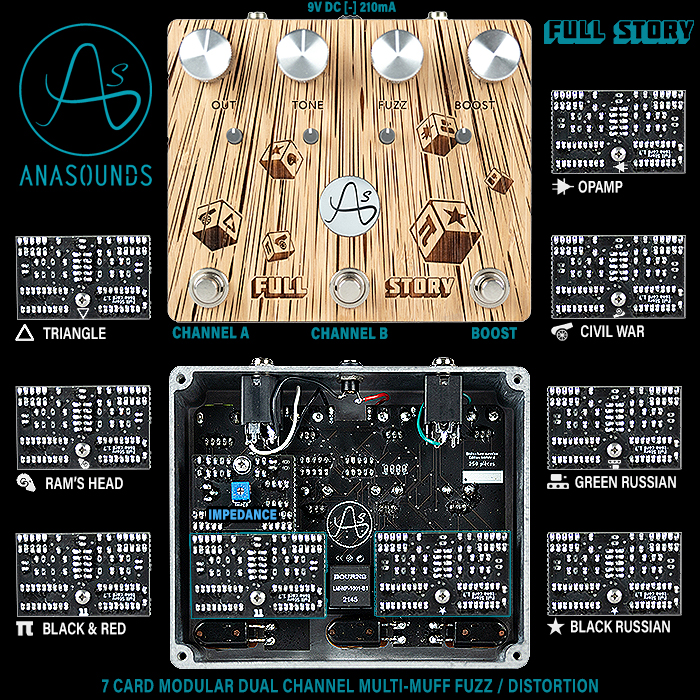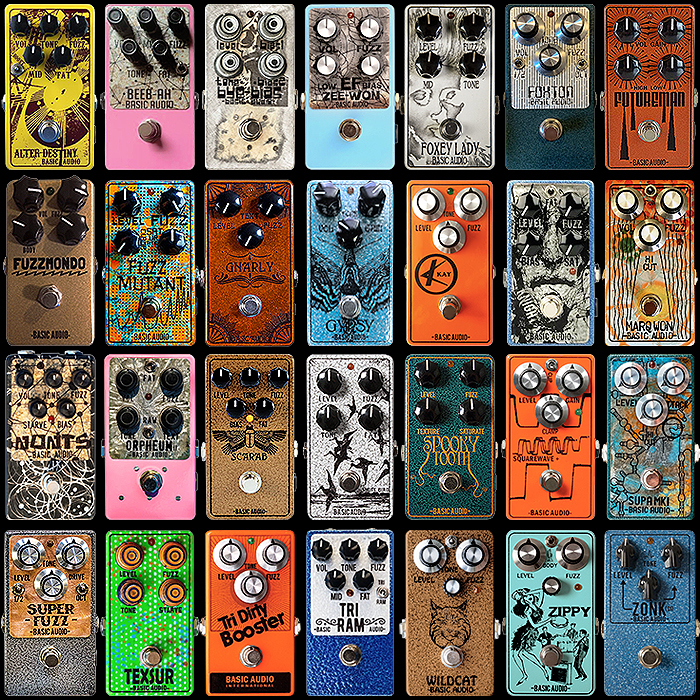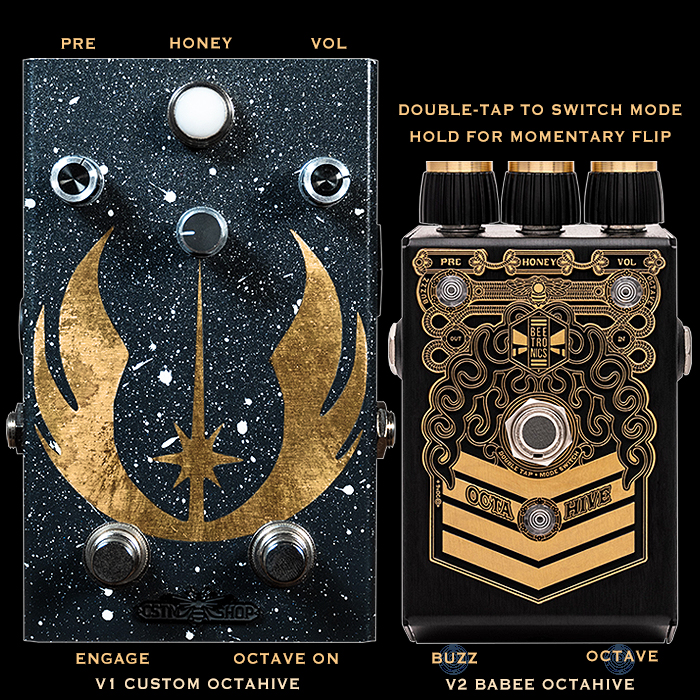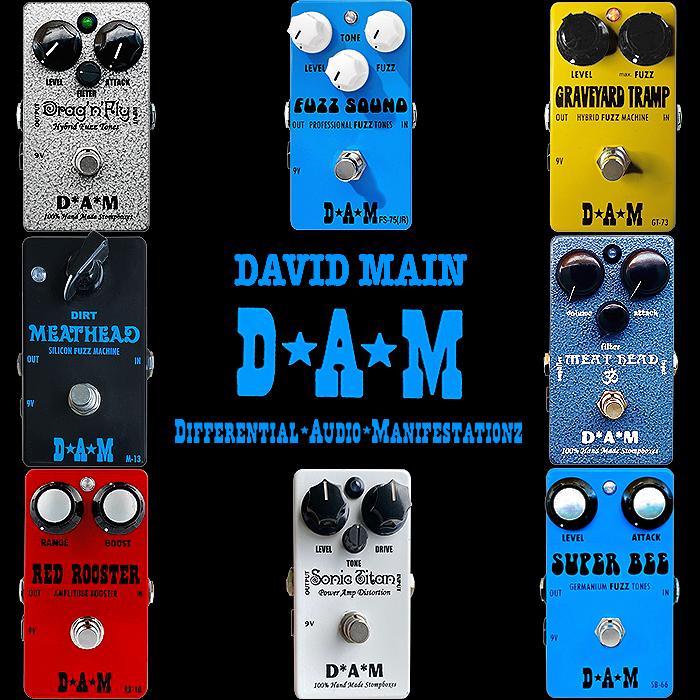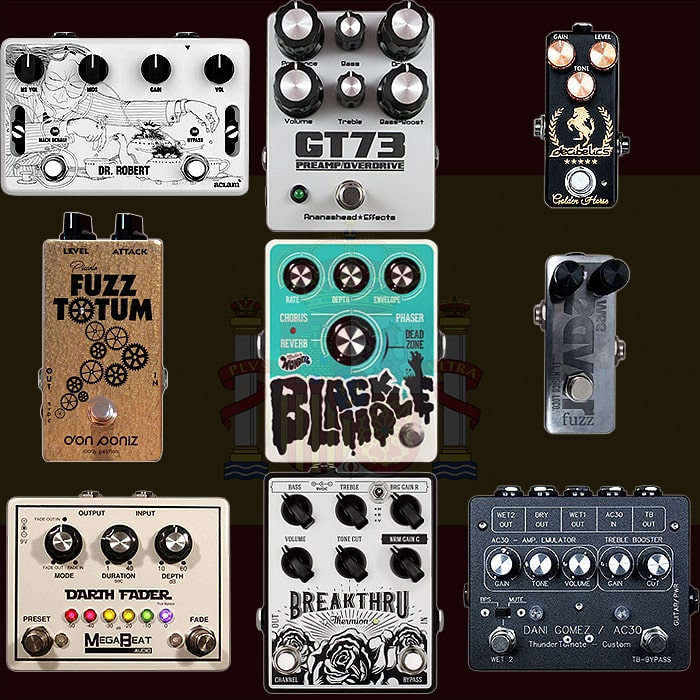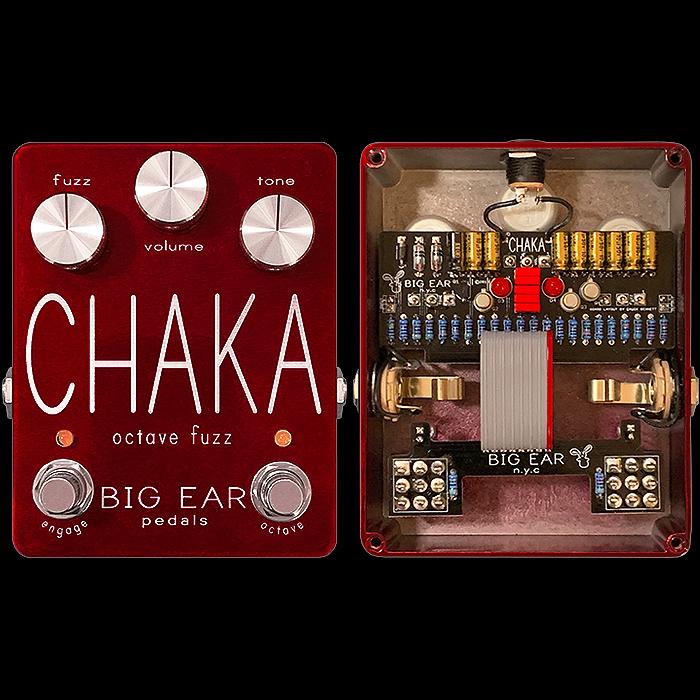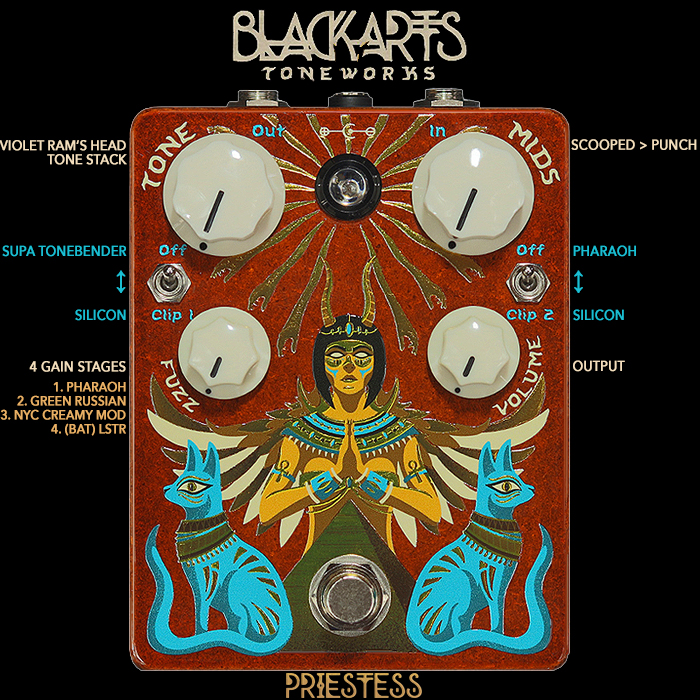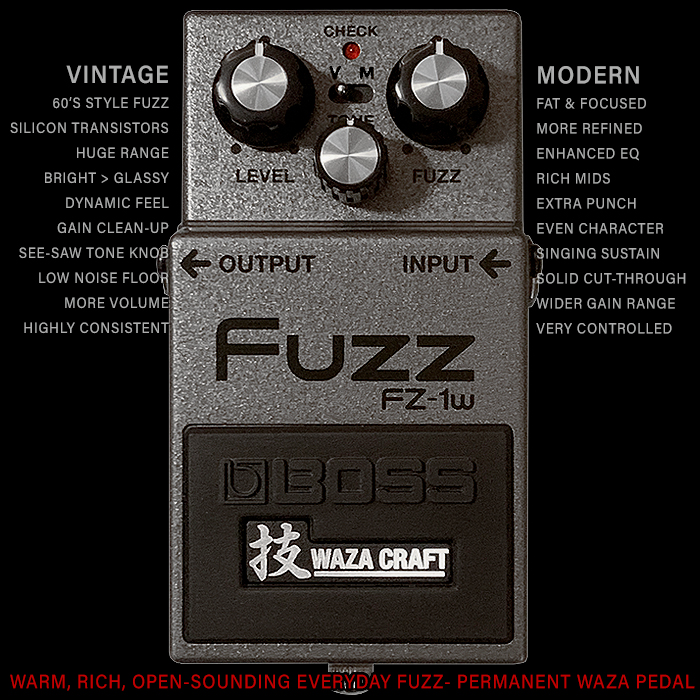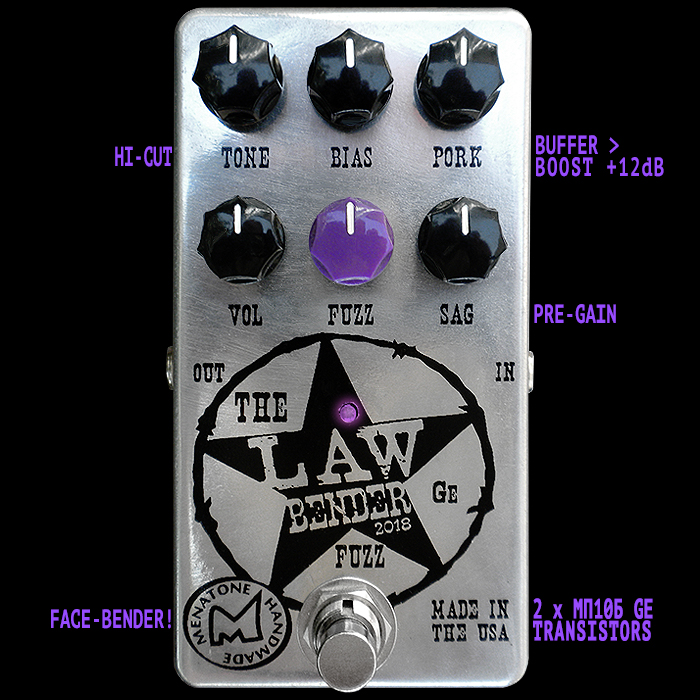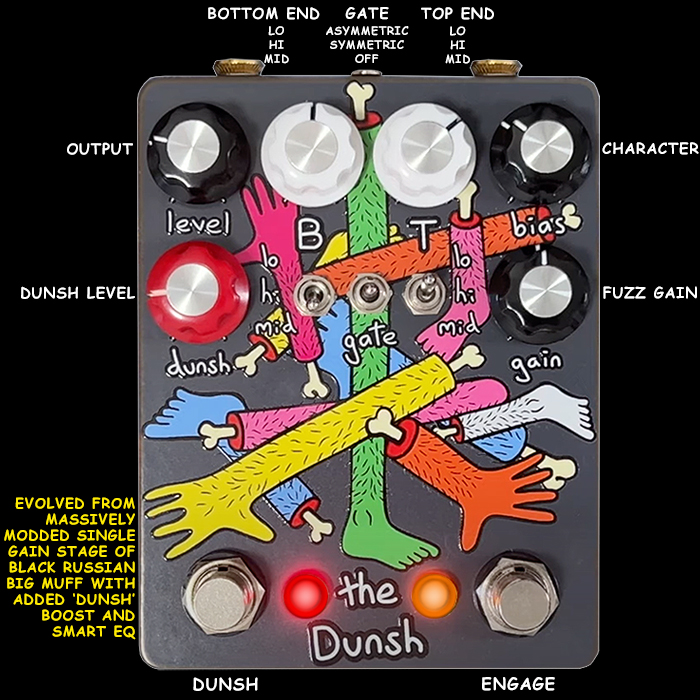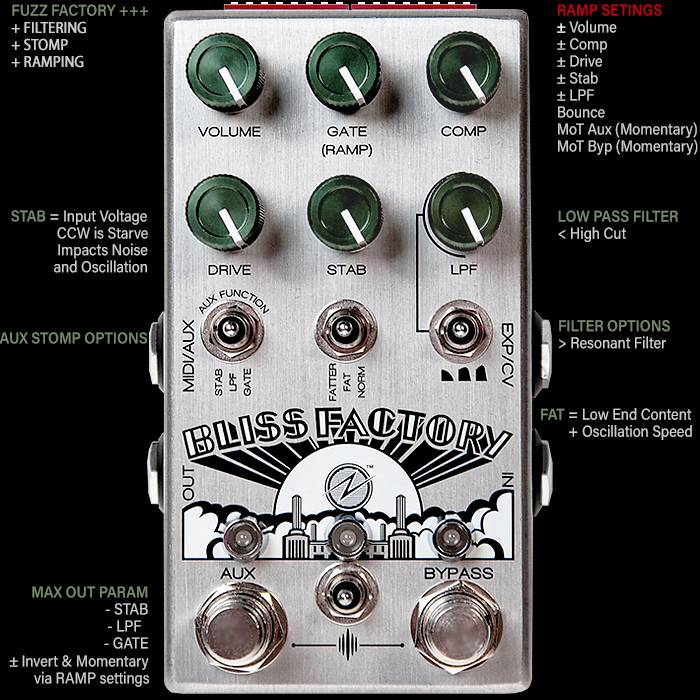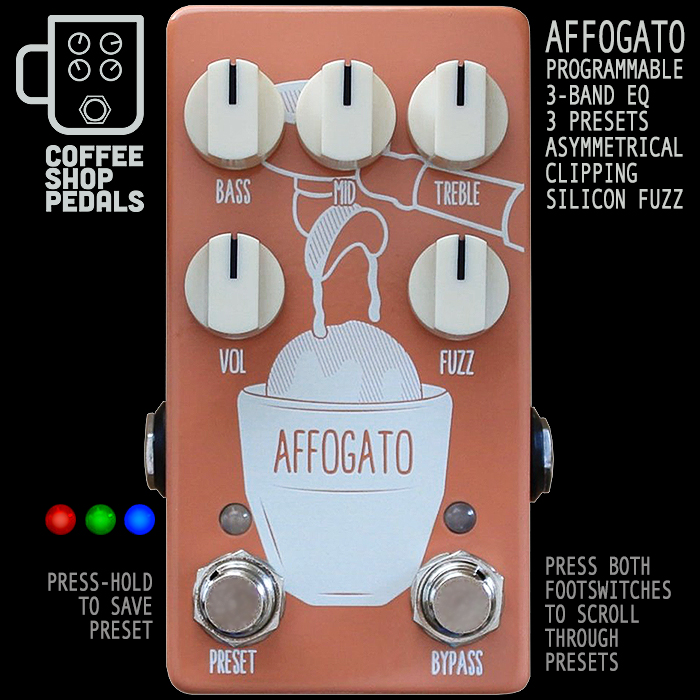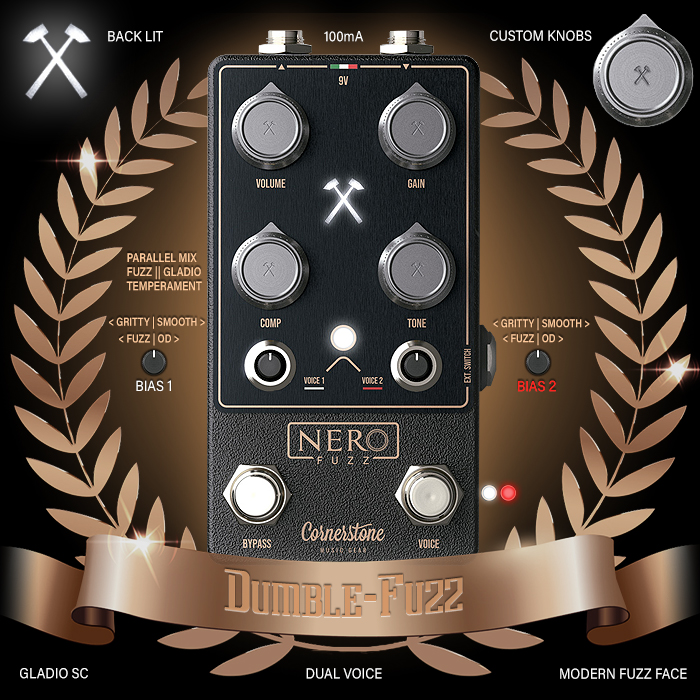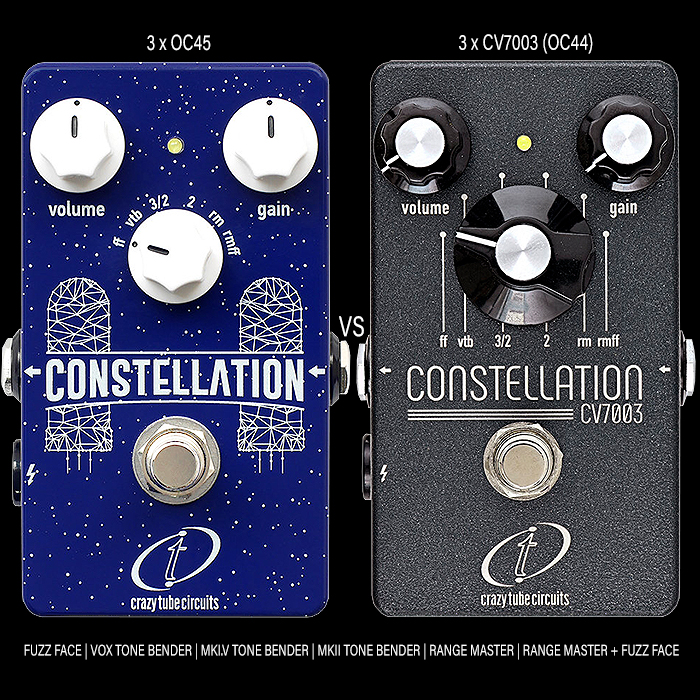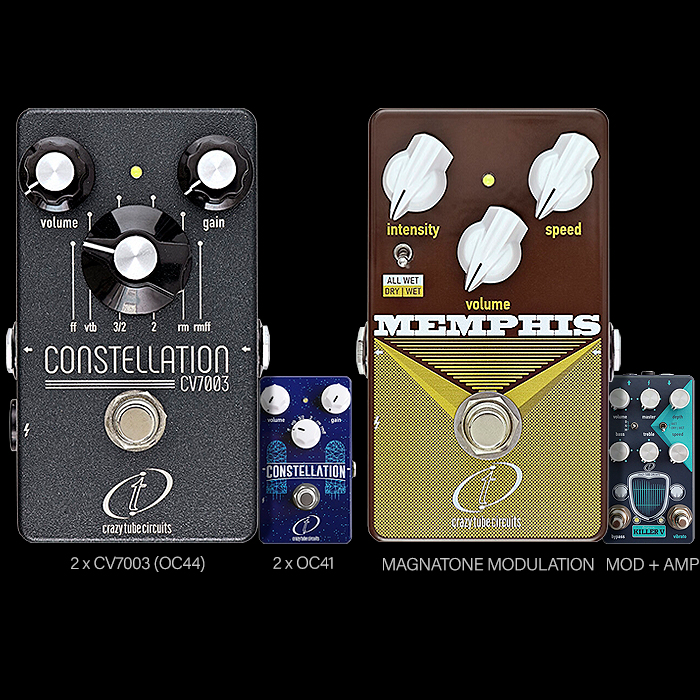Thermion Engineering Delivers the Greatest Hits of Fuzz in an Incredibly Smart Format - the Stone Age 5-Circuit Multi-Fuzz

The main Engineer behind Thermion Engineering - José Manuel Martínez García-Casarrubios - has truly hit it out of the park with his 4-Engine, 5-Circuit, Multi-Mode Multi-Fuzz - which carries 5 essential Fuzz Circuits - but where the 5th Octave one - courtesy of Schottky SS14 Diodes, applies Octave Fuzz for each of the 4 Engine types in their own way - meaning really a 2 x 4 Multi-Fuzz. The Engine Types being Single Transistor Fuzz, ’M’ for Maestro, ’Smiley Face’ for Fuzz Face, and ’Th Symbol’ / Thermion for Muff.
Controls - High Cut, EQ : In/Out, Octave Mix, Fuzz Engine : Single Transistor / ’M’ for Maestro / ’Smiley’ for Fuzz Face / ’Th’ (Thermion) Symbol for Muff, Low Cut, Volume, Clean Mix, Gain, Bypass/On Footswitch, Add Clean Footswitch, Add Octave Footswitch.
For the Octave you have a dedicated Footswitch and Mix / Blend knob, alongside a separate Add Clean Footswitch and corresponding Clean Mix / Blend knob. For me the Clean Blend is essential for achieving those Fuzzy-Drive tones I like so well - and in fact taming each of those circuits into overdrive territory.
You have High and Low Cut Tone Controls - which you can Bypass if you wish to via toggle-switch - possibly it’s best to Bypass those by default to get the maximum flavour. The pedal is obviously a larger format - which is fully justified by those 3 Footswitches and 8 Controls and indeed complexity of circuit.
There are no less than 10 Silicon Transistors onboard - 2 designations - 2N2222 and BF423 - where the 2N2222’s are both in TO-92 and T0-18 (Metal Can) formats as those varieties have different operational voltages / characteristics. José has done all kinds of clever circuit manipulations / circuit bending to get Germanium characteristics out of these Silicon Transistors - particularly for the Maestro and Fuzz Face voicings.
As always the Circuit and PCB Design is immaculate - and the pedal’s interior really underlines how smart it is - as the following gutshot perfectly illustrates :

José was kind enough to provide me with some essential operational and circuit design details which give you a better idea of how the overall circuitry and pedal works :
"There are just two types of transistors : 2N2222 for NPN and BF423 PNP. In the case of 2N2222, I use two variants, based on the gain I need for each stage. One is the regular looking (T0-92), and one is the 'retro' looking (TO-18 Metal Can)"
"There are five complete fuzzes inside Stone Age, with very similar configurations to the originals. I have added some creative biasing networks in order to mimic the germanium leaking currents and unwanted capacitances that are so typical for the Maestro and Fuzz Face, which use BF423. Those transistors are very high frequency high voltage video spec transistors which I have found love to be cut down to audio spec and low voltages."
"In the case of single transistor and Thermion (modded for dynamics and definition Muff) I have the 2N2222 with also some of those biasing networks to mimic some not so perfect transistors in a consistent way."
"The reason for choosing those two have been reliability, and noise, as those have very-very low noise. You could imagine that five fuzzes inside the same box... could be a problem with hum and radio freqs. Also, those have very consistent gains allowing me to tweak the biasing networks very perfectly to get the transistors to the point I want in each unit without major tweaks."
"The octave fuzz is not transistor based, it's diode based (SS14) in a 'rectifier' way, just like the Octavia does. Hence, the octave is far from perfect, but has that retro feel. The originals used germanium diodes with around 0,3 voltage drop. I have used Schottky diodes (SS14) with around 0,2 voltage drop and some components around in order to destroy the perfect behaviour of the modern schottkys."
"The Stone Age has 10 transistors in total: 4 x 2N2222 for the Th, 2 x BF423 for the Maestro, 2 x BF423 for the Face, and 2 x 2n2222 for the Single Transistor, as one is an inverting buffer to keep it in phase with the others."
"It's been a very fun development, trying to get the most retro tones with modern components biased the wrong way."
"The way the clean and octave mixes work is with mixer op amps and relay switched inputs; just like a good mixer would."
"Also note that as marked out in green (above visual) that the EQ pots are dual ganged, as the filters are second order. I've never spotted those filters used in other pedals; the high Q factor makes for a great resonant frequency and accurate cut."
Demos
Final Thoughts
I obviously have not had any hands-on yet, but the Brett Kingman demo above in particular sounds fantastic throughout and really showcases how formidable this pedal is. If you find any voicing a little too strong or too harsh - you can always temper it with the Clean Blend and the EQ.
Everything about this pedal is really smart - including the super cool Stone Age Cave Paintings Artwork - just genius all-round really. Surely a modern classic in the making!
The Octave sounds really impressive too - crisp and cutting - and I really love how everything has come together here. I feel this is going to be an essential for us dedicated Fuzz Fans as a really clever take on several of the key genres - and actually very reasonably priced at €235. I will for sure be negotiating with José to obtain one for the Reference Collection at preferential rates. While I am already into Christmas mode - where I need to cater for my multitude of Nephews and Nieces - so alas no more pedal acquisitions until the new year! The Stone Age Fuzz is of course available for order right now from the Thermion Webstore.
For sure I will be looking to get one in very early next year. Do you readers like what you see here - how many of you are considering the Stone Age too?







